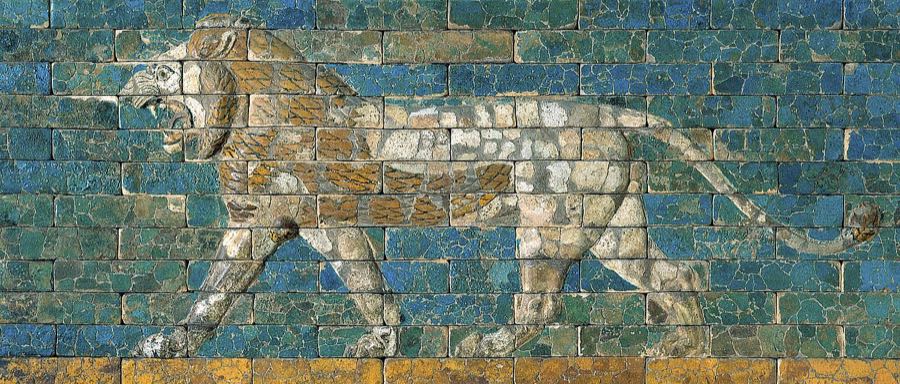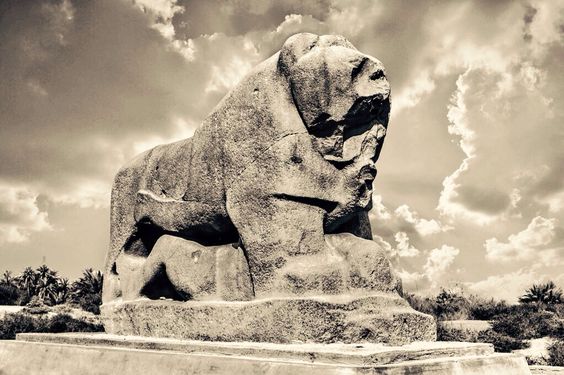A history of the Iraqi lion
Asiatic lions have been native to Iraq for centuries until the last-known lion in the country was killed in 1918 in southern Iraq.

The physical presence of the Iraqi lion may be past tense, his spiritual presence is still very noticeable in Iraq today. In fact, different Sumerian cuneiform texts refer to the feeding of lions kept by the king of Ur, Shu-Sin, who reigned around 2000 BC.
Even more popular are the lions that have frequently been displayed in Babylonian art and architecture, symbolizing strength and overcoming adversity. On the walls of the Processional Way leading up to the Ishtar Gate, lions are depicted in enameled brick relief along with bulls and dragons.

Behind the Ishtar gate, the ancient Babylionian sculpture ‘the Lion of Babylon’ is located. The 2600-years old black basalt statue is among the most celebrated archeological artifacts in Iraqi history and depicts a lion trampling the enemy, meant to frighten possible intruders. Biblical and Islamic traditions mention the story of the prophet Daniel who was exiled in Babylon in the 6th century BCE. Daniel received the protection of God after he was thrown before the fierce Babylonian lions by the king and thus survived. The story of Daniel reminds the reader that the hostility of the Iraqi lion is not aimed at everyone. Those who are unassailable to the lions are the just and truthful.
He delivers and rescues, He works signs and wonders in heaven and on earth, He who has saved Daniel from the power of the lions (Bible; Dan 6:27).
